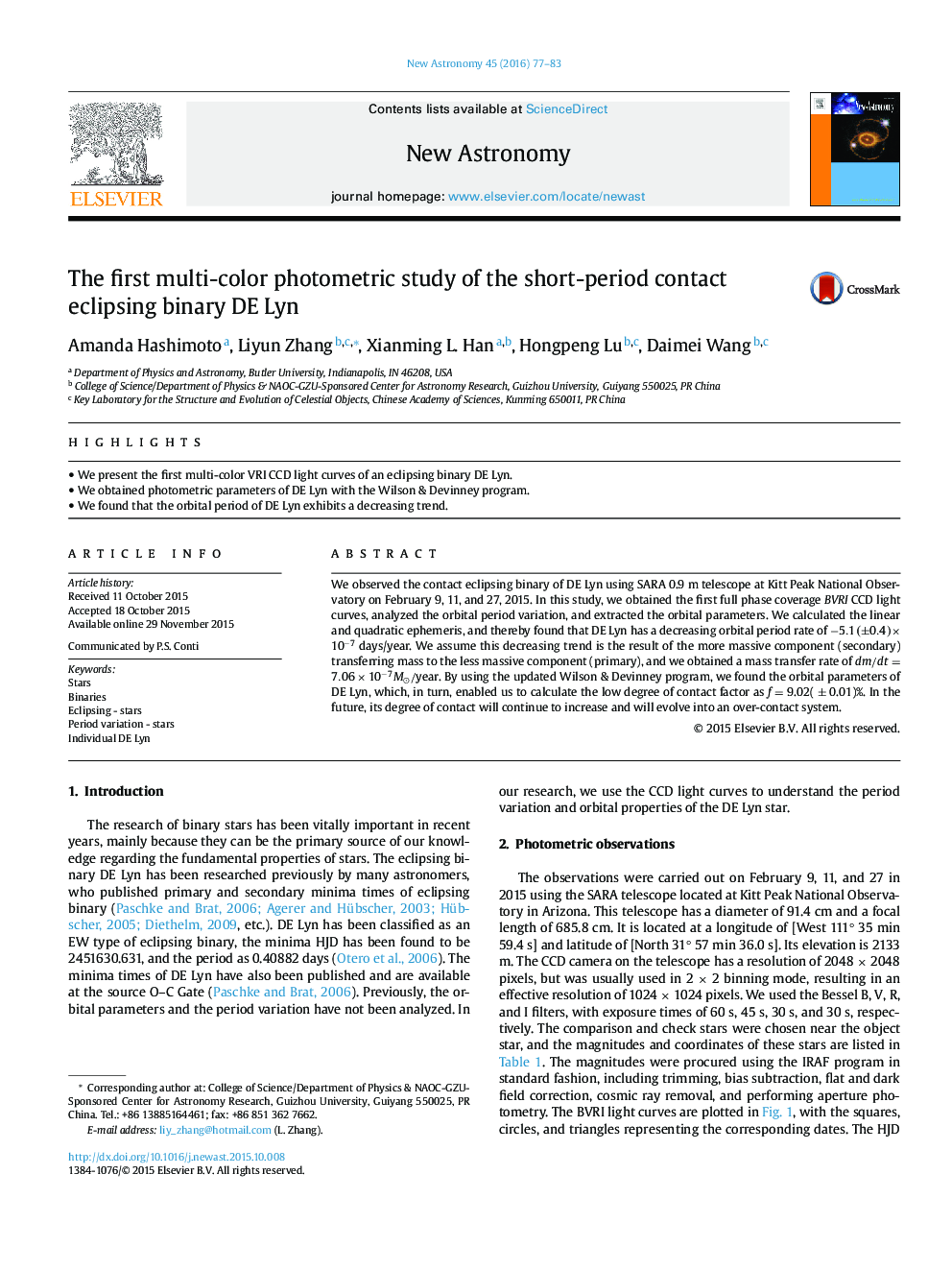| Article ID | Journal | Published Year | Pages | File Type |
|---|---|---|---|---|
| 1778805 | New Astronomy | 2016 | 7 Pages |
•We present the first multi-color VRI CCD light curves of an eclipsing binary DE Lyn.•We obtained photometric parameters of DE Lyn with the Wilson & Devinney program.•We found that the orbital period of DE Lyn exhibits a decreasing trend.
We observed the contact eclipsing binary of DE Lyn using SARA 0.9 m telescope at Kitt Peak National Observatory on February 9, 11, and 27, 2015. In this study, we obtained the first full phase coverage BVRI CCD light curves, analyzed the orbital period variation, and extracted the orbital parameters. We calculated the linear and quadratic ephemeris, and thereby found that DE Lyn has a decreasing orbital period rate of −5.1(±0.4)×−5.1(±0.4)× 10−7−7 days/year. We assume this decreasing trend is the result of the more massive component (secondary) transferring mass to the less massive component (primary), and we obtained a mass transfer rate of dm/dt=7.06×10−7M⊙/yeardm/dt=7.06×10−7M⊙/year. By using the updated Wilson & Devinney program, we found the orbital parameters of DE Lyn, which, in turn, enabled us to calculate the low degree of contact factor as f = 9.02( ± 0.01)%. In the future, its degree of contact will continue to increase and will evolve into an over-contact system.
